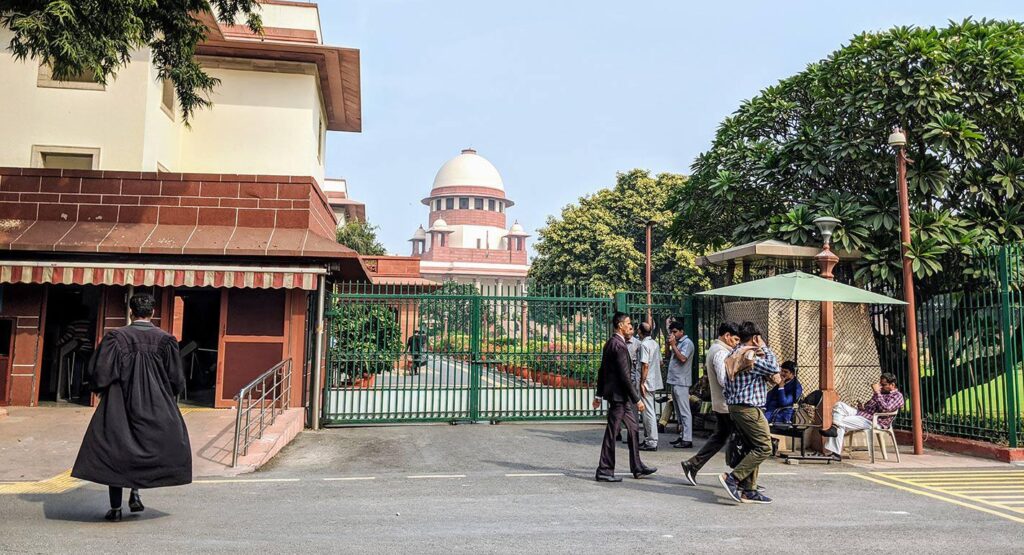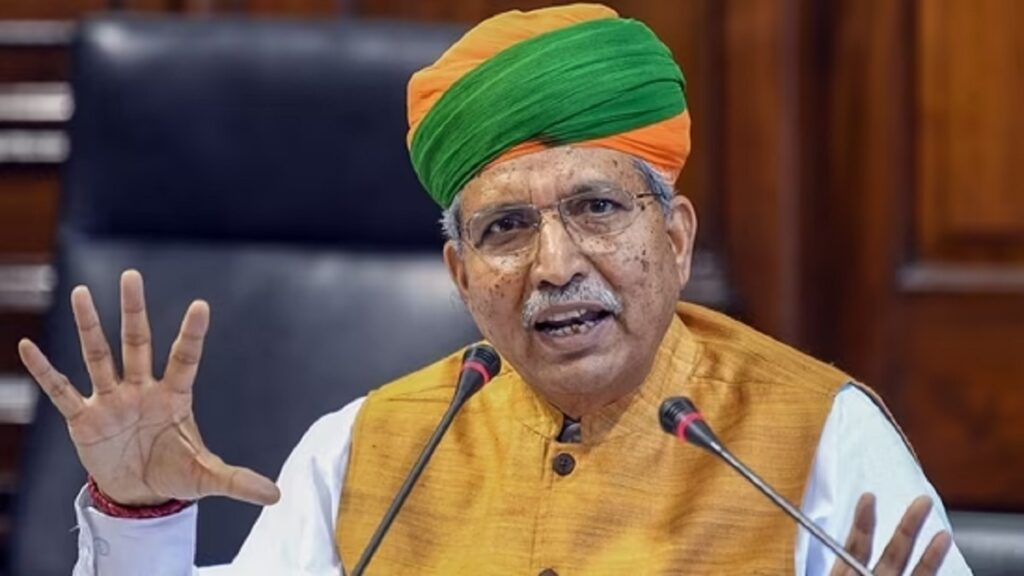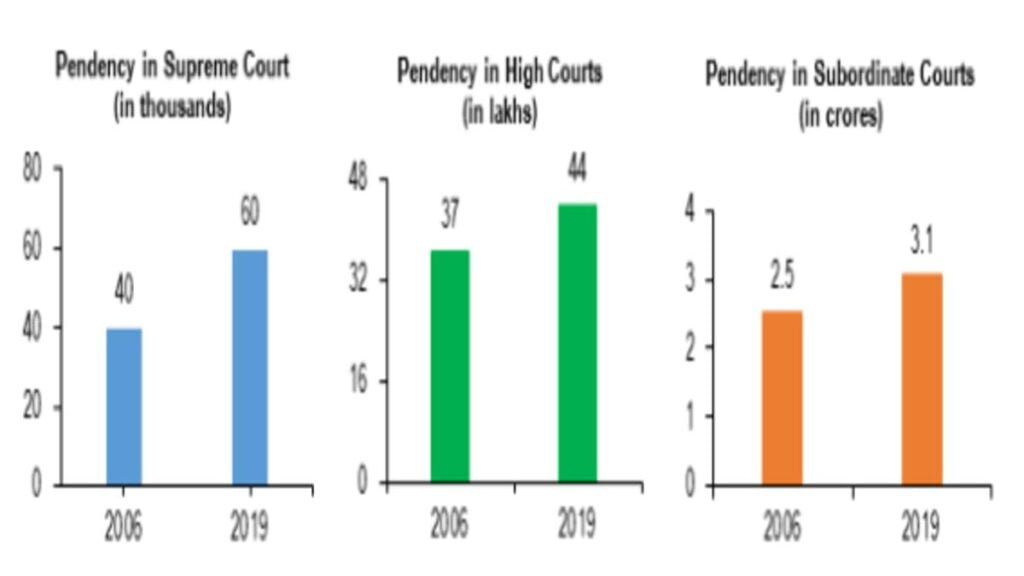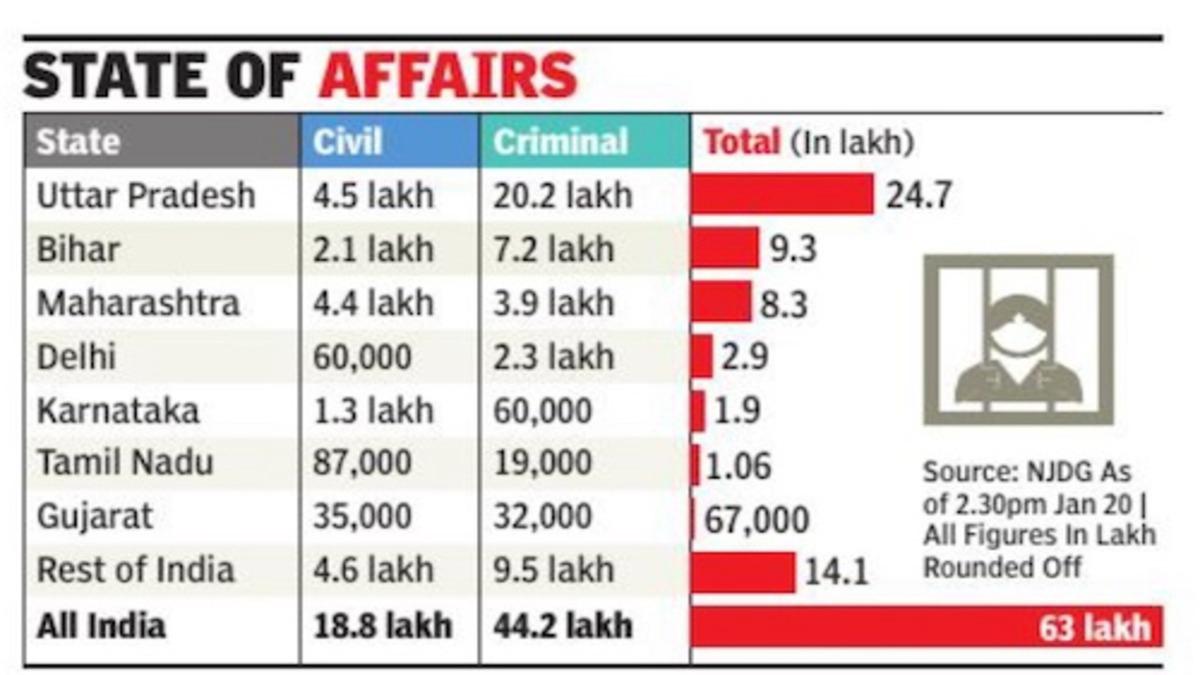Key Highlights:
- Pending cases:
- Subordinate Courts: 2.76 crore
- High Courts: 43 lakh
- Supreme Court: 54 thousand
- Dominant issue: A significant portion of cases originates in Subordinate Courts.
- Regional variation: States like Uttar Pradesh, Tamil Nadu, and Bihar have rising case numbers, with up to 5 to 6 million cases pending in each state.
- Long-term problem: Case pendency has persisted for the last 30 years and continues to worsen.
Indian Courts: Tribunals, such as the National Company Law Tribunal (NCLT), face a backlog of over 30,000 cases. This reflects a broader issue affecting even remedial measures aimed at addressing delays.
Table of Contents
National Conference on Judiciary: Spotlight on Pendency
At a recent National Conference on Judiciary, President Droupadi Murmu highlighted that nearly 62,000 cases pending in High Courts are over 30 years old, with three dating back to 1952. The data shows that four cases have been pending since 1954 and 1955, including two in the Calcutta High Court and one in the Madras High Court.

President Murmu emphasized the need to change the judiciary’s “culture of adjournments,” stating that long-standing case pendency is a critical challenge. “All stakeholders must prioritize finding a solution,” she said.
According to the National Judicial Data Grid (NJDG), around 2.45 lakh cases pending in High Courts are between 20 and 30 years old.
Read this also: Surat Crowned Cleanest City of India: A Milestone Achievement at Swachh Vayu Sarvekshan 2024
Law Minister Arjun Ram Meghwal: Addressing the “Tareekh Pe Tareekh” Culture
During the same event, Law Minister Arjun Ram Meghwal urged the need to break the perception that Indian courts follow the “tareekh pe tareekh” (date after date) system. He stressed the importance of timely justice delivery to restore public trust in the judiciary.

Overview of the Issue
The massive backlog of cases in Indian High Courts, particularly those pending for over three decades, presents a significant challenge to the justice system. The repercussions extend beyond the individuals involved, impacting the judiciary’s overall effectiveness and society’s functioning. Prolonged case delays lead to injustices, erode public trust in the legal system, and hinder economic development. Addressing this backlog is crucial to ensuring timely justice, upholding the rule of law, and maintaining the judiciary’s integrity.
Read this also: Maharashtra Leads India in FDI Inflows During Q1 FY24-25
Causes of Rising Judicial Pendency
Several factors contribute to the rising backlog of cases in Indian courts:
Shortage of Judges
A critical reason for the backlog is the shortage of judges. The sanctioned strength of judges across the judiciary is insufficient, and even the approved positions are not always filled.
Lack of Infrastructure
Inadequate infrastructure within the judicial system further exacerbates delays. Many lower courts lack modern facilities, technology, and space, affecting case management efficiency.
Complexity of Cases
The increasing complexity of legal disputes, especially in areas like corporate law, intellectual property, and taxation, requires more in-depth analysis and expert testimony, resulting in prolonged hearings and delayed judgments.
Procedural Delays
Legal procedures, often involving multiple stages such as hearings, cross-examinations, and appeals, contribute significantly to the backlog. These procedural delays add to the overall time taken for cases to be resolved.
Increased Legal Awareness
While greater legal awareness is positive, it has led to a surge in the number of cases being filed. However, this rise has not been matched by an increase in judicial resources, further straining the system.

Impact of Judicial Pendency
The growing backlog has severe consequences for the justice delivery system, including:
- Delayed justice
The prolonged time taken to resolve cases undermines the basic tenet of justice being delivered in a timely manner. - Loss of public faith
Continued delays erode trust in the legal system and discourage people from seeking justice. - Burden on the judiciary
Courts become overburdened, affecting the quality of decisions and increasing the likelihood of errors. - Economic impact
Delayed resolution of legal disputes hinders economic activities and investments, affecting the economy. - Financial strain on litigants
Litigants often face significant financial burdens due to prolonged legal battles, increasing the cost of seeking justice.
Read this also: The Impact of AI on Global Labour Income: Rising Challenges and Inequality
Steps Taken to Reduce Pendency
Several measures have been implemented to address this growing backlog, including:
- Increasing the number of judges: The Law Commission of India’s 1987 recommendation to appoint 50 judges per million people remains a key strategy.
- Virtual court systems: The establishment of virtual courts for remote hearings has helped streamline the judicial process.
- E-court portals and e-filing: These initiatives enable online case management, document submission, and court fee payments, improving efficiency.
- Fast-track courts: Specialized courts expedite the resolution of certain cases, helping to reduce the load on regular courts.
- Alternative Dispute Resolution (ADR): Mediation and arbitration are being promoted as effective alternatives to litigation, easing pressure on the courts.

Conclusion
A well-functioning judiciary is fundamental to a just and equitable society. Addressing the backlog in Indian courts requires a coordinated effort between the government and the judiciary to restore public confidence and ensure timely justice delivery.









[…] Read this also: Indian Courts Face a Growing Backlog Crisis: Urgency for Reform […]
[…] Read this also: Indian Courts Face a Growing Backlog Crisis: Urgency for Reform […]
[…] Read this also: Indian Courts Face a Growing Backlog Crisis: Urgency for Reform […]
[…] Read this also: Indian Courts Face a Growing Backlog Crisis: Urgency for Reform […]